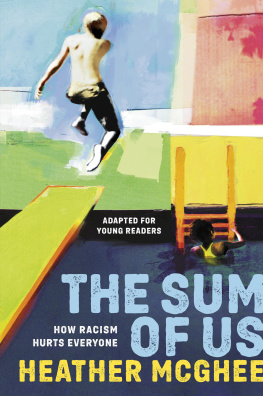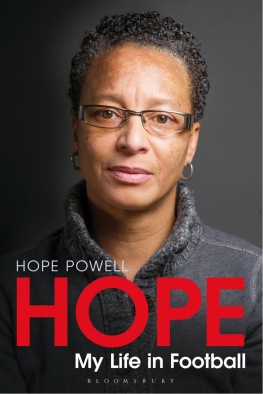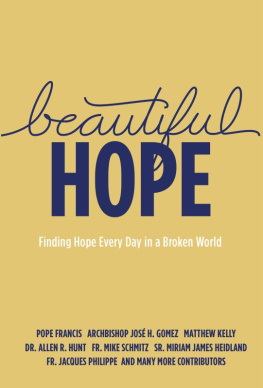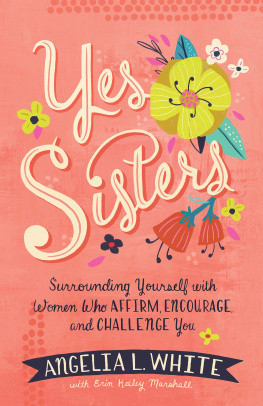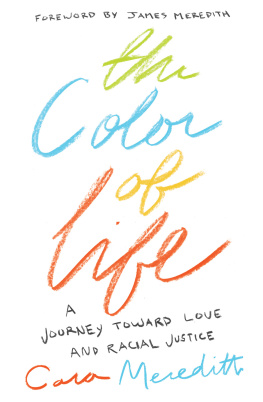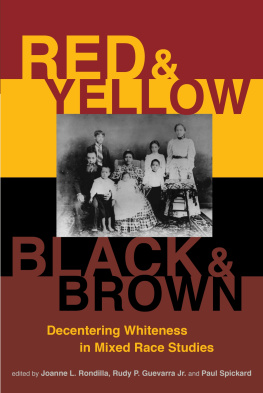Between Sisters
Emancipatory Hope out of Tragic Relationships
Evelyn L. Parker
foreword by Jack L. Seymour
BETWEEN SISTERS
Emancipatory Hope out of Tragic Relationships
Copyright 2017 Evelyn L. Parker. All rights reserved. Except for brief quotations in critical publications or reviews, no part of this book may be reproduced in any manner without prior written permission from the publisher. Write: Permissions, Wipf and Stock Publishers, W. th Ave., Suite , Eugene, OR 97401 .
Cascade Books
An Imprint of Wipf and Stock Publishers
W. th Ave., Suite
Eugene, OR 97401
www.wipfandstock.com
paperback isbn: 978-1-62032-786-9
hardcover isbn: 978-1-4982-8757-9
ebook isbn: 978-1-5326-3128-3
Cataloguing-in-Publication data:
Names: Parker, Evelyn L.
Title: Between sisters : emancipatory hope out of tragic relationships / Evelyn L. Parker.
Description: Eugene, OR: Cascade Books, 2017 | Includes bibliographical references and index.
Identifiers: isbn 978-1-62032-786-9 ( paperback ) | isbn 978-1-4982-8757-9 ( hardcover ) | isbn 978-1-5326-3128-3 ( ebook )
Subjects: LCSH: Racially mixed people-Race identity United States | African American women-Religious life | Womanist theology | Christian ethics-United States
Classification: BJ1275 .P25 2017 ( print ) | BJ1275 .P25 2017 ( ebook )
Manufactured in the U.S.A. May 22, 2017
Table of Contents
Parkers book is a serious womanist memorandum that speaks to and about black/white mixed-raced young women and girls living during perilous times. Situating her text in ethnography and critical race theory, Parker pens a message of hope during the rise of Trump offering the ethical principles of forgiveness, femaleship, fortitude, and freedom. Like a sentinel she calls out that liberation from racism will come when we receive peoples plural identities as Gods gift to the world.
Linda E. Thomas , PhD, Professor of Theology and Anthropology, Lutheran School of Theology
A masterful, empathetic storyteller, Evelyn L. Parker, as liberatory, compassionate bard, serves as pedagogical catalyst to move us to think about the complex lives and experiences of mixed-race girls, through the education of our imagination in Between Sisters . Communicating for understanding, she views forgiveness, femaleship, fortitude, and freedom as processes of emancipatory hope which can move us to solidarity for action. Like the parables of Jesus, Parker names the issues of privilege and systemic oppression, as a need to embrace hope and overcome the status quo. As gardener, Parker plants seeds of great intellectual curiosity; she fertilizes with lived experiences and invites us to partner with her in pulling out the weeds of cruelty, subjugation, and harassment amidst race, gender, class, and sexuality, dispelling myths of colorblindness and a post-racial, post-sexist, post-classist, gender-fluid world, embracing hope in dialog with the Holy Spirit. Using mixed media and her interdisciplinary gifts, she problematizes issues and seeks to dismantle oppression. She wants us to engage critical thinking, and own up to our complicity in the pains of the world. Between Sisters is a must-read for any interested in transformative pedagogy, adolescent girls, systemic oppression, and a theology and ethics of liberation.
Cheryl A. Kirk-Duggan , Professor of Religion, Shaw University Divinity School
To Geraldine Parker, my mother, with love
Foreword
Among Sisters and Their Brothers
C ommunication for understanding and solidarity for action are important goals of education. So is inspiring hope for a better future. As a fine teacher, Dr. Evelyn Parker offers all of these in Between Sisters. The book is written explicitly for black/white mixed-race young women... in a white dominant society where race is imposed on relationships and identity for the benefit of the dominant culture (Introduction). Yet I believe that the book must be essential reading for a broader audience-particularly religious persons who seek to live faithfully in the everyday. Between Sisters invites conversation and inspires action among sisters and their brothersindeed among all who care about mixed-race young women.
Communication for Understanding
In our current racially charged time, too much of both public and personal talk occurs without real conversation, by which I mean without adequately hearing the cries and challenges of those who are excluded and victimized. Rather than listening, dominant-culture persons (I am white and male) are often more concerned about the responses we will give or the defenses we will make. We are blind to the dynamics of the everyday realities that others face. We fail to understand that our experiences are different. We trust where others have learned to distrust. Between Sisters challenges our perceived notions.
By probing the interlocking dynamics of race, gender, class, and sexuality (that is, intersectionality) in our social fabric, Evelyn Parker elicits communication and provides opportunities for understanding. Sensitively yet insistently she demonstrates how race consciousness and race discrimination are embedded in the dynamics of our everyday living. Personal stories are her primary vehicles for communication. In each chapter, to illustrate the actual experiences of young women and offer pedagogical openings, she uses interview materials, historical examples, documentaries, novels, and films. To her primary audience, she offers language to name their own realities and strategies to address it. She opens the eyes of her secondary audience to see the realities and meanings to which we were earlier blind (or more accurately, that systematically we have been taught to ignore).
For all of us, her book is a superb example of the pedagogy that Paulo Freire called problematizing. She focuses our visions on the problems/realities in front of us. We cannot then ignore the voices, realities, and experiences of others. Sometimes we see them for the first time; other times we realize that we have been ignoring them for a long time. The consequence is that we either must address the problems or knowingly ignore them. For black/white mixed-race young women, the cause of despair and conflict is revealed as well as possibilities for hope and freedom. For well-intentioned religious educators and others who care for such young women, the claims of living in a post-racial world are revealed as false. For all of us, problematizing education causes us to engage social realities.
At the heart of the book and at the heart of her hope are Dr. Parkers deepest theological convictions and experiences of a God who offers unconditional love, of communion that unites, of transformations that offer life, and of ways that human beings can work together for justice. These convictions are not simply theoretical hopes or good words for her. Rather they are good news that makes a difference and grounded hopes embodied in concrete actions. In fact, they extend Dr. Parkers profound concept of emancipatory hope. The processes of forgiveness, femaleship, fortitude, and freedom that frame the book shape the educational and spiritual process of emancipatory hope.
Each of these four elements invites persons to make decisions about how they will relate to others and what they will do. Confidently, emboldened by the indwelling presence of the Holy Spirit, Dr. Parker proclaims I have argued that hope... can truly liberate us from the interlocking and pervasive oppressions of racism, classicism, sexism, and heterosexism (Chapter 5). Furthermore, she offers concrete clues in the conclusion, Horizons of Hope for Mixed-Race Young Women and Girls, about religious practices that challenge the systems of domination. Without a doubt, she points to faithful education and action that address the black/white mixed-race young women to whom she is writing.


